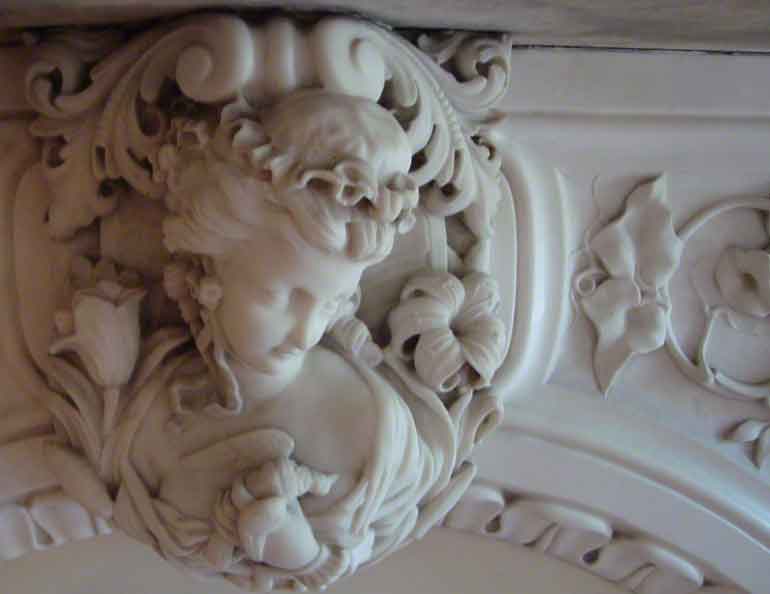A brownstone house at the southwest corner of Arlington and Beacon Streets across from Boston Garden contains a poignant memorial to two of Isabel Anderson’s maternal aunts who died young.
Designed by Boston architects Gridley J.F. Bryant and Arthur D. Gilman, and built around 1860, the large town house at No. 1 Arlington Street was first purchased and occupied by William Fletcher Weld, Isabel’s grandfather. He and his second wife, Isabella Melissa Walker, whom he married in 1839, took occupancy of the new house in 1862. William’s first wife Mary Perez Bryant had died in 1836.
One of the most distinctive features of the house are the ornate marble fireplaces in the large ground floor drawing rooms and salons of the former Weld mansion. An exquisite cartouche on one of these surely was meant to memorialize the death of two of William and Mary’s daughters: Sarah Weld who died as as infant in 1831 and Mary Minot Weld who died in 1853 at the age of 24.
The cartouche shows a girl, eyes closed as if asleep, wearing a nightcap. She clutches an upside down dead bird, perhaps a parakeet or other song bird, that symbolizes the silence of death. The girl is flanked on either side by ivy, an evergreen that symbolizes perennial life and immortality, and morning glories, flowers that bloom and then wither quickly in the light of day. The white lily to the right is a Christian symbol for chastity and virtue. A Turkish legend on the origin of the tulip, shown to the left of the girl, holds that they sprang from the earth as a sign of grief. In the Gilded Age, infant and child mortality was high, and the image of a sleeping child such as the one in the Weld home focused a family’s attention “on the child’s soul rather than the mourner’s loss,” wrote the art historian Annette Stott. “It is about consolation, not grief.”
No. 1 Arlington Street is now part of the Boston campus of Fisher College. To learn more about the history of the house, visit the website Back Bay Houses and search for it there.
If you are curious why William Fletcher Weld abruptly moved out of the house in 1878, relocated to Philadelphia, and never again returned to Boston, you’ll find the answer on page 35 of Skip Moskey’s biography of William Weld’s granddaughter Isabel and her husband Larz: Larz and Isabel Anderson: Wealth and Celebrity in the Gilded Age.
Illustrations
Detail, Mantlepiece (ca. 1862) and
Exterior View, No. 1 Arlington Street
William Fletcher Weld House, Boston
Photos by Skip Moskey
Copyright (c) 2015. All rights reserved
(Digimarc® Guardian for Images)

